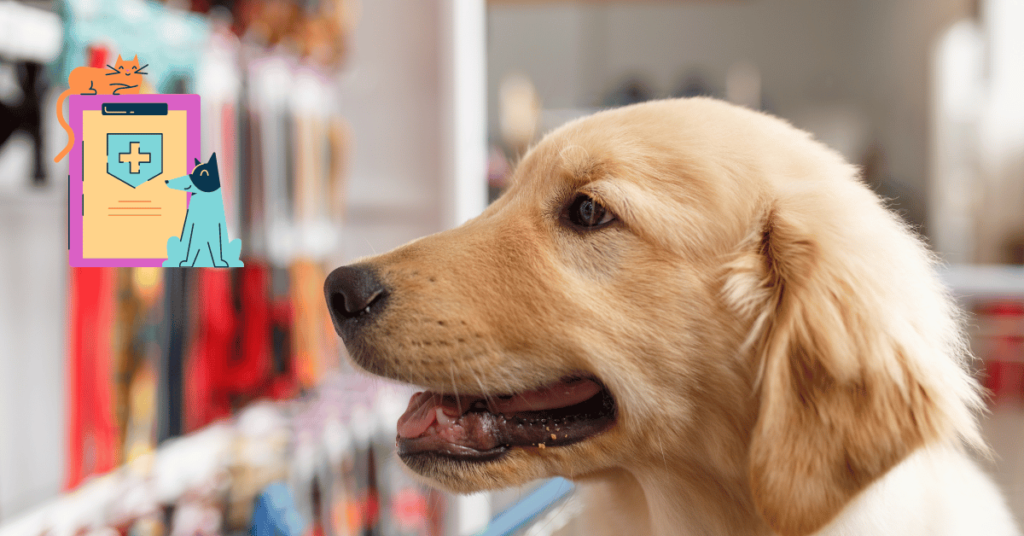Pet insurance has become an increasingly popular way for pet owners to manage veterinary costs, especially in emergencies or when faced with high medical bills.
However, many veterinary professionals are still unsure about which insurance plans to recommend to their clients. According to a study, nine out of ten veterinarians don’t know which specific pet insurance provider to recommend. But the good news is that vets don’t need to know all the ins and outs of every insurance plan in order to guide pet owners toward a solution that suits their needs.
In this article, we’ll explore what vets recommend when it comes to pet insurance and what factors pet owners should consider when selecting a policy.
So read this article till the end for complete understanding.
Why Vets Don’t Recommend Specific Pet Insurance Plans
Veterinarians are in the business of caring for animals, not selling insurance. This is why most veterinary professionals focus on educating pet owners about the general benefits of pet insurance, rather than promoting a specific plan. Without an insurance license, veterinary staff are not qualified to dive into the details of different policies. Instead, they aim to help pet owners understand why having insurance is important and encourage them to seek expert advice from insurance companies, which specialize in helping people choose the right plan.
Key Factors to Consider When Choosing Pet Insurance

When pet owners are trying to decide on the best insurance for their pets, there are several key factors to keep in mind. These factors vary by provider and plan, and they will determine the overall cost and coverage of the policy.
1. Deductible
The deductible is the amount the pet owner must pay out-of-pocket before the insurance starts covering expenses. Plans with lower deductibles often have higher monthly premiums, while plans with higher deductibles come with lower monthly costs.
2. Reimbursement Rate
The reimbursement rate is the percentage of the vet bill that the insurance company will pay back once the deductible has been met. Most policies cover between 70% and 90% of approved expenses, leaving the owner to pay the remainder.
3. Coverage Limits
Coverage limits define how much the insurance company will pay in total during a year or over the lifetime of the pet. Higher limits offer more protection but often come with higher premiums. Pet owners should consider whether they prefer unlimited coverage or if they are comfortable with a cap on payouts.
4. Eligible Expenses
Different plans cover different expenses. Some plans cover only accidents and illnesses, while others may include preventive care such as vaccinations, dental cleanings, or wellness checkups. It’s important to understand what each policy covers to ensure it meets the needs of the pet.
5. Pet’s Age and Breed
Certain plans may limit coverage based on the pet’s age or breed. Older pets or certain breeds that are prone to hereditary conditions may have limited options. Pet owners should also be aware that some insurance providers have age caps on enrollment, so it’s best to insure pets while they’re young.
Educating Pet Owners About Pet Insurance
Veterinary teams often take on the role of educating pet owners about how pet insurance works. One common misconception is that pet insurance works like human health insurance with a network of providers. However, most pet insurance plans don’t have networks, meaning owners can typically visit any licensed veterinarian.
Another important point for vet teams to communicate is that most pet insurance requires the owner to pay the vet bill upfront and get reimbursed later. While some providers offer direct vet pay, the majority of policies operate on a reimbursement model.
Should Vets Recommend Pet Insurance?
Though veterinary teams should not recommend a specific insurance provider, they can still discuss the importance of having pet insurance with their clients. By highlighting the benefits of pet insurance, vets can help pet owners make more informed decisions.
When Pet Insurance Is Especially Helpful
- Young Pets: Pet insurance is often most affordable for young, healthy pets. Vets can recommend pet owners enroll early to lock in lower rates and maximize coverage over the pet’s life.
- Older Pets: While options may be more limited for older pets, pet insurance can still provide value. Discussing the pet’s current health and potential future health issues can help pet owners assess whether insurance is a worthwhile investment.
- Pre-Existing Conditions: If a pet has a pre-existing condition, it’s important to note that most insurance policies won’t cover treatments for that condition. However, pet insurance can still help cover the cost of other unrelated health issues. Vets can guide clients to clarify coverage options with insurance providers.
How Can Vets Help?
Veterinarians can assist pet owners in several ways when it comes to choosing the right insurance:
- Discuss the Pet’s Health Needs: Vet teams can talk with pet owners about their pets’ specific needs, helping them decide what type of coverage would be most beneficial. For example, some families might need more extensive accident and illness coverage, while others might want routine care included in their policy.
- Share Personal Experiences: If the clinic has had good experiences with a particular insurance company, they can share this information with clients. However, they should always encourage pet owners to research and find the policy that best fits their unique circumstances.
- Refer to Insurance Experts: Instead of recommending specific insurance plans, veterinary teams can refer clients to insurance experts, which compares pet insurance plans based on the pet’s age, breed, and the owner’s preferences. This way, pet owners can get expert advice tailored to their needs.
Final Thoughts
While veterinarians don’t recommend specific pet insurance plans, they play a crucial role in educating pet owners about the benefits of insurance and guiding them toward making informed decisions. The key factors to consider—such as deductibles, reimbursement rates, coverage limits, and eligible expenses—can vary widely between policies, so it’s important for pet owners to do their research or seek the advice of an insurance expert. Ultimately, pet insurance can provide a financial safety net, allowing pet owners to focus on their pet’s care without worrying about the cost.
So that was all about this article. If you have any further questions feel free to comment down below. We are always here to help you!




